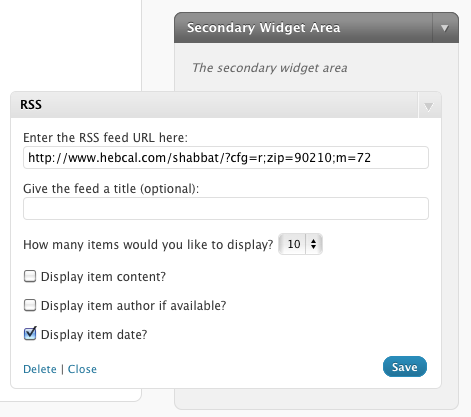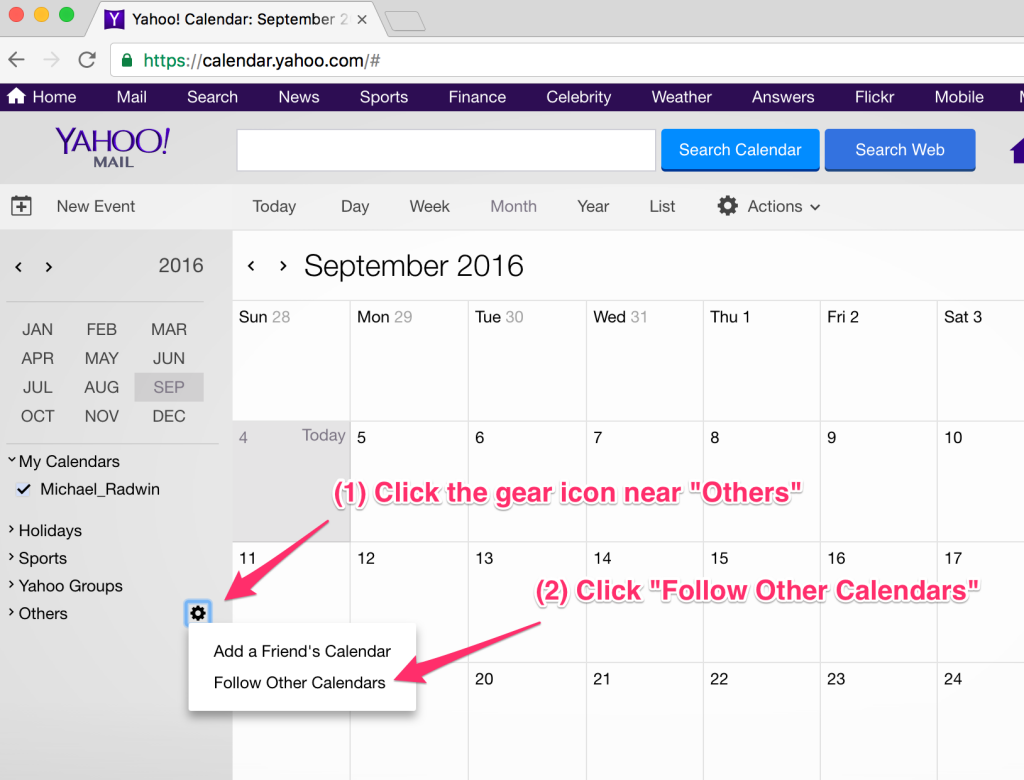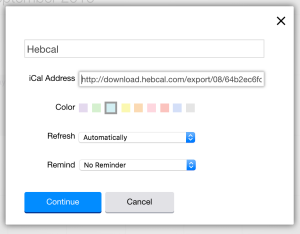If you wish to see the פָּרָשַׁת הַשָּׁבוּעַ (weekly Torah portion) in your Facebook news feed, please “Like” the Hebcal page on Facebook.
Author Archives: mradwin
Shabbat Times WordPress plugin
Our new Hebcal Shabbat Times WordPress plugin displays candle-lighting time, Torah Portion, and havdalah time in a WordPress widget. If you run a synagogue or other local Judaism-related website, you can get customized times based on your USA Zip code.
An alternative approach is to use the WordPress built-in RSS Widget and configure as follows:

Pesach Sheni, Erev Purim, Erev Tish’a B’Av
By popular demand, we’ve added Pesach Sheni, a minor holiday that comes every year on the 14th of Iyyar, one month after Passover.
We have also added Erev Purim and Erev Tish’a B’Av dates to the Hebcal calendar on the days prior to Purim and Tish’a B’Av. Previously the “Erev” dates were only displayed for major yom tov holidays, but both of these holidays have significant evening-time congregational events associated with them.
Yahoo! Calendar Jewish holidays download
Follow these instructions to add a Hebcal Jewish holiday calendar 5-year feed to Yahoo! Calendar.
- Go to https://www.hebcal.com/hebcal if you’re downloading a holiday calendar, or https://www.hebcal.com/yahrzeit if you’re downloading a Yahrzeit + Anniversary calendar.
- Fill out the form with your preferences and click the Create Calendar button
- Click the Download… button
- Select the “Yahoo! Calendar” option from the Download dialog box
- Copy the entire web address from Hebcal.com
- Go to your Yahoo! Calendar, and click the “+” button next to “Calendars” on the left side of the page

- Click Subscribe to Calendar
- Paste the web address into the “Email or iCal address” window

- Click Next at the top of the page
- Type a name for the calendar in the window after “Display as.”
- Choose a color for the calendar in the “Color:” pull-down menu
- Click Save at the top of the page
Included in the Hebcal Jewish holiday downloads are options to select major holidays (Rosh Hashana, Yom Kippur, Pesach, etc.), minor holidays (Purim, Chanukah, etc.), special Shabbatot, public fasts (Tish’a B’Av, etc.), Rosh Chodesh, and modern holidays (Yom HaAtzma’ut, etc.).
Added Outlook 2011 macOS
Jewish holiday download support for Outlook 2011 for macOS has been added to the hebcal.com website. See our download and import instructions for more details.